By Smita Mukerji
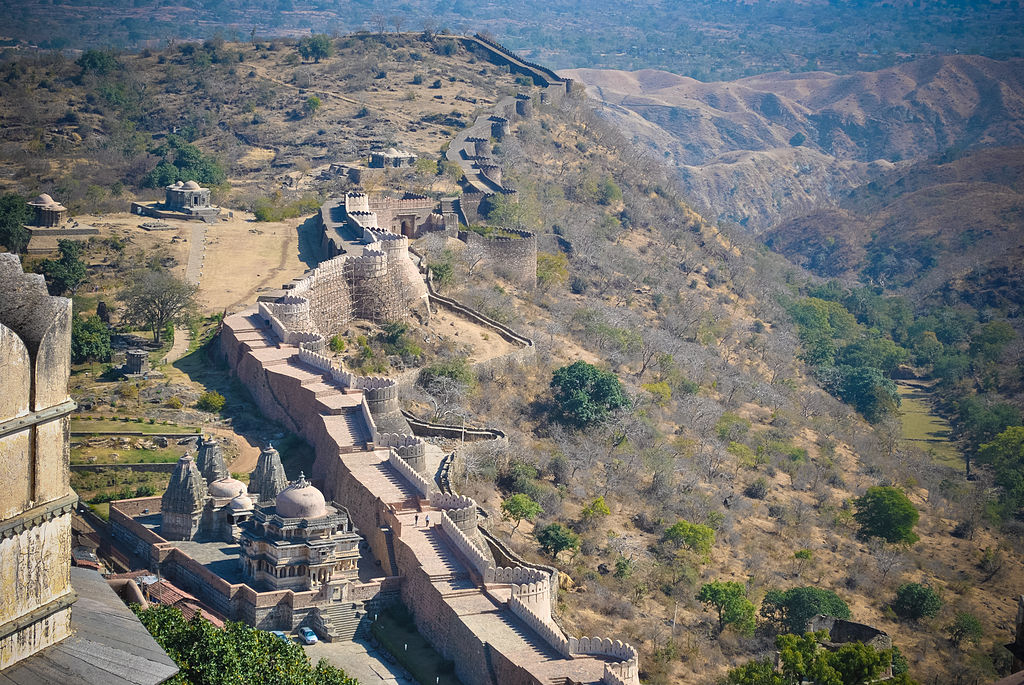
Read the previous section of this series here.
“He spurned every overture which had submission for its basis, or the
degradation of uniting his family by marriage with the Tartar”
P R E L U D E
Maharana Pratap (b. May 9, 1540[1], Kumbhalgarh) was aware that his bequest was no bed of roses but hard and stern responsibility that had devolved on his shoulders, and he took it up in grim earnest. One thing he knew with certainty, that Mewar would receive Mughal attention soon. He had no intention whatsoever of allowing the invaders to establish themselves either directly or indirectly in his beloved Mewar, and resolved to defend it.

He set about the task decisively, husbanding his resources as best as he could, first moving his capital from Gogunda to Kelwara (Kumbhalgarh)[2] in order to keep his centre at a safe distance from the Mughals’ route. He fused old Mewar with the new and organised internal government in the districts he was left with. He introduced an orderly system of administration and restructured the military, setting levels of precedence of his chiefs (along the lines of the Mughal model) including the Bhils, who formed the last lines of his defence. During his wanderings in his youth in the hills and forests in the farthest corners of his dominion, he had cultivated a relationship with the Bhil tribals who dwelt in the South-west wilderness of Mewar. The association was abiding and the Rana would make them equal pillars of his state power[3] along with the aristocratic Rajputs, which proved crucial in the struggle against the Mughals.
The Rana also strengthened his ties with the Rajput clans which had until then resisted going over to the Mughal camp. The significance of the attendance of Rao Chandrasen of Marwar, who had remained one of the fiercest adversaries in the path of Mughal imperialism, at Pratap’s coronation was not missed at Agra. Accordingly, on his way for his Gujarat campaign in 1572, Akbar took care to fortify his troops stationed at Jodhpur and Idar.[4]
Akbar had tried his best to organise and introduce an ordered government in the Eastern plains of Mewar captured previously. The land was measured and assessed (the revenue pegged at Rupees 7.5 lakhs.[5]) It was divided into 24 districts, significant portions of which were given away as religious endowments[6] with the idea of colonising the area by settling Muslim immigrants there. The Mohan and Rampura areas were joined and renamed as Islampur.[7]
But Akbar did not seem in a hurry to deal with the Rana. Sources indicate that he deliberately deferred action against Mewar. He neither sent any force in pursuit of Rana Udai Singh in the Girwa forest, nor to Dholiya or Rana, neighbouring villages of Gogunda, where the old Rana took up residence subsequently. Akbar had not made any move to bring Mewar’s capital Udaipur under his control and nor did he undertake any expedition against Pratap in the vulnerable period immediately after his accession. Apparently, the siege of 1568 had imprinted on the mind of the Mughal as well and he preferred methods of rapprochement rather than truculence in his effort to gain Mewar as a tributary, the advantages of which, apart from securing a stable route to Gujarat, were many.
As head of the Sisodia clan, the Maharanas of Mewar retained the highest ritual status among the Rajputs. If he managed to draw Pratap into an alliance, other resisting Rajput states were sure to have followed suit and he would have with one stroke ended the Rajput challenge without measuring swords. It was this idea with which he had initiated a treaty with Chittod earlier, but the bloody campaign that it ended in in 1568 had left the Rajputs further hostile and intransigent, as also it left a distaste in him for engaging in military conflict with Mewar. He subsequently grew in statesmanship, had an open mind and qualities of caution to divine that the social basis of his empire lay in soliciting the trust and cooperation of the Rajputs, not in antagonising them. In reality, he was patently bewitched with their nobility, martial character and unsurpassed courage.[8]
But a consistent imperialist throughout his political career, it was impossible for Akbar to tolerate another power centre apart from himself and that meant ending the independence of individual Rajput states.[9] Rana Pratap exercised the old Sisodia prerogative of intervening in the power struggle following the death of Rao Mansingh of Sirohi in 1572, nominating his maternal nephew, Rao Kalla, as the Rao. This sent alarm bells in the Mughal court as the emperor was seen as the sole entity entitled to make capital from local disturbances and dictate order. But Akbar did not seem particularly keen to espouse the cause of Jagmal Singh, who was married to Rao Mansingh’s daughter as also the nominated successor of the previous Rana of Udaipur,[10] which could have been turned into a glib casus belli to annex Chittod.[11] From all appearances Akbar was anxious to settle the problem of Mewar through peaceful negotiations.
Accordingly, he sent an emissary under his trusted noble, Jalal Khan Qurchi, in September 1572 to the Rana, significantly at the time he was preparing for his Gujarat campaign, perhaps a tactical move to ensure a safe passage for Mughal forces back to Agra. The talks lasted until November 1572, but were unsuccessful in arriving at a resolution.
In the previous section it was discussed why it was inconceivable for the Rana to yield to Akbar enlisting himself as a Mughal mansabdar, and still more abhorrent to him the idea of surrendering a daughter from his house to the Mughal seraglio. Akbar tried to wear down Pratap’s stance by making his allies submit, first through persuasion and if that did not succeed, conquering them by force. On his way back from Ahmedabad to Agra after a triumphant Gujarat campaign, he left a detailed contingent under Raja Man Singh in Idar and Dungarpur.[12] Dungarpur was taken after a hard-fought battle at Bilapana[13] and it was this time, in June 1573 that Man Singh of Amer headed towards Udaipur to try and open up negotiations with Pratap, on the Emperor’s errand but in the guise of a courtesy call.[14] He therefore sent most of his troops to Ajmer and was accompanied by only a handful of attendants.
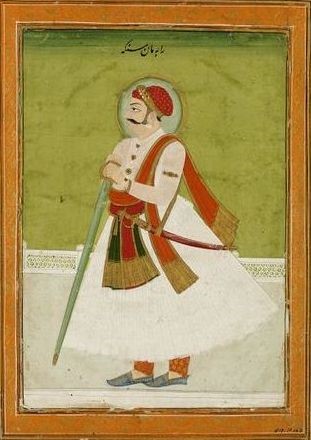
There are numerous differing accounts about this encounter, both Rajput and Mughal, but the common thread in all of them is that Man Singh was respectfully received and that in the end he failed to attain his desired end of persuading the Rana to consider a friendly alliance with the Mughals. The efficacy of the mission as described by Abu’l Fazl was that, the Rana ‘almost submitted’, received the imperial order and donned the royal khilat (robe of honour) but proceeded to put off Man Singh with pliant excuses about accompanying him to the Mughal court to make a personal homage.[15] This version however is not corroborated in any other record[16] and contradicted in multiple Rajput, Mughal as well as European accounts,[17] and can therefore be put down to a cover up for an embarrassing rebuff.
The Rajput poetic work, Rawal Ranaji ki Vat, gives a remarkably contrasting account of the meeting according to which, Rana Pratap organised a feast for Man Singh on the bank of Udai Sagar Lake. But when the time for partaking the meal came, Kunwar Amar Singh represented the Rana who had excused himself stating an indisposition of stomach. But Man Singh understood the real reason behind the Rana’s absence, unwillingness to eat in the company of one from a family which had marital association with mlechchhas. This was followed by barbs from some Sisodia chiefs about his relations with the Mughals and oaths of meeting him in the battlefield. Feeling affronted Man Singh had made an offering to the Goddess Annapurna and departed, leaving the meal untouched and alluding to an invasion on Mewar. After his departure, a purification of the utensils and the site of the feast was made and the Mewari nobles bathed and cast off the clothes they had worn for the meeting to rid themselves of the contamination of Man Singh’s touch.
However, this account seems to be a spin of bardic imagination which gained currency in later times, since none of the contemporary Rajput accounts make a mention of any such feast organised at Udai Sagar Lake. The Rajprashasti[18] and Mehta Nensi’s khyat[19] merely hint at some cause of ill-will between Man Singh and the Rana at the time of meal, which appears to have been stretched by posterior writers to invent the legendary tale. Neither these authoritative accounts, nor Amarkavya Vanshavali, Raj Ratnakar, Jagannath Rai Prashasti, nor any of the other vanshavalis or khyats, record such an event or feast. Moreover, the mission under Raja Bhagwant Das, Man Singh’s father, to the Rana that was undertaken not long after this meeting belie any such precedent of an unpleasant exchange or insulting treatment rendered to the Kachwahas.
It is highly improbable that the Rana would have been so cavalier to have behaved in an irresponsible manner and imperilled his nation. By all accounts he was diplomatically wise and received each one of Akbar’s envoys with the greatest courtesy and consideration. Moreover, being fully cognisant of the grounds for his uncompromisable stance he appears to have adopted a dilatory strategy, using the period of the negotiations to put off a confrontation and in the meanwhile consolidate his kingdom, strengthen his army and plan for the inevitable, impending military show-down. It is unlikely he would have jeopardised this bare wager for the sake of foolhardy posturing leading to early escalation in a delicately poised situation.

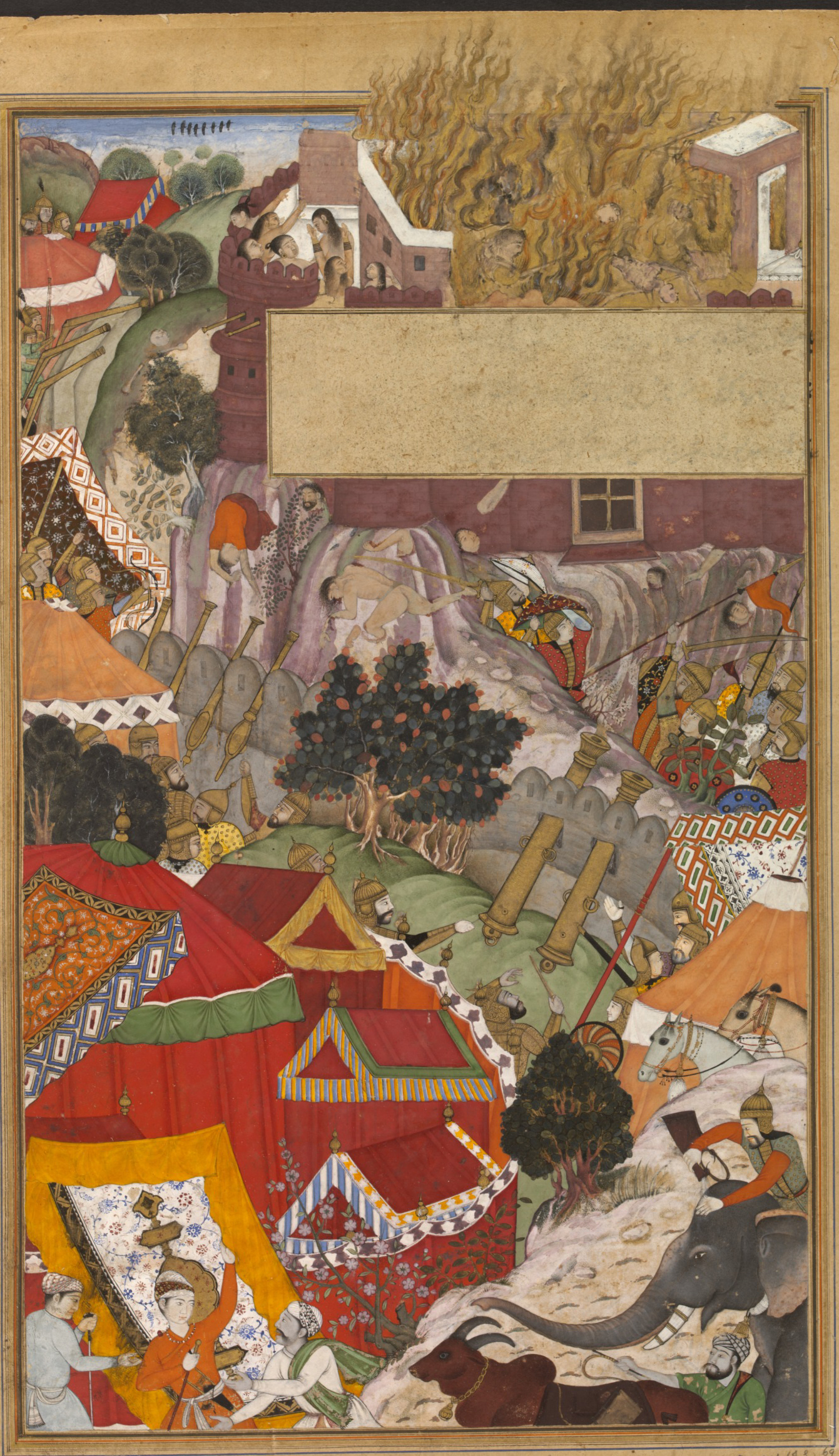
Akbar’s keenness for a peaceable settlement with Mewar can be gauged from the fact that he subsequently sent two more delegations to the Rana. In September 1573, Raja Bhagwant Das on the way back from Ahmedabad, accompanying Akbar from a campaign after successfully suppressing a rebellion, was detailed towards Idar and Mewar. After having stormed the fort of Bhadhnagar and taking Rewaliya, he reduced to extremities Raja Narain Das of Idar, who had made common cause with the rebel Afghans, and betook himself towards Gogunda to pay a visit to the Rana. The talks turned out much the same way as previously, and Abu’l Fazl’s wishful account notwithstanding that euphemistically renders its outcome, were wholly ineffectual in breaking the stalemate.
Akbar made a final attempt to make the Rana give in to his offer with the appointment of Raja Todar Mal for intercession in December 1573, on his way back from Gujarat where he had been deputed to complete the land revenue settlement. Todar Mal apparently gloried in the proud mien of the Rana, though he did not owe him a formal visit, unlike the two former envoys from the Rana’s tribe. He had not yet reached the stature of latter years as the famed Finance Minister of the Mughal Empire, but from his credentials gathered from dealings in war and peace he was credited with the sapience to be entrusted with the important mission. Though he was accorded a courteous welcome, all his acumen and wisdom failed to sway the Rana from his resolution, and he came away only feeling greater respect for the great Rajput, but without success in hand.
The spurning of these peace missions from Akbar might lend an impression of an intractable, bellicose self-seeker to the Rana. But the truth is that the talks floundered due to Akbar’s obstinacy on getting Pratap to agree to two conditions that were anathema to that proud bearer of an ancient lineage: to appear personally in the imperial court to pay homage and to accept the proposal of a marital alliance with the Mughals. The Rana wanted to merely retain his right to an independent and dignified existence. Talks with Udaipur had failed on previous occasions on these very points, as Maharana Udai Singh turned them down in 1567. Three months into the subsequent siege of Chittod, some Mewari nobles had approached Akbar for a truce. In spite of the fact that both sides had been completely worn down by the battle till then, Akbar’s rigid insistence on personal homage by Rana Udai Singh, against the advice of some of his generals, had caused the peace initiative to be scuttled, followed by the tragic consequence for Chittod. That save this obduracy on the part of Akbar an entente cordiale was possible between the two sides is demonstrated from the subsequent agreement in 1614 that their successors, Emperor Jahangir and Rana Amar Singh, reached by the simple act of dropping of these two conditions from the treaty by Jahangir.
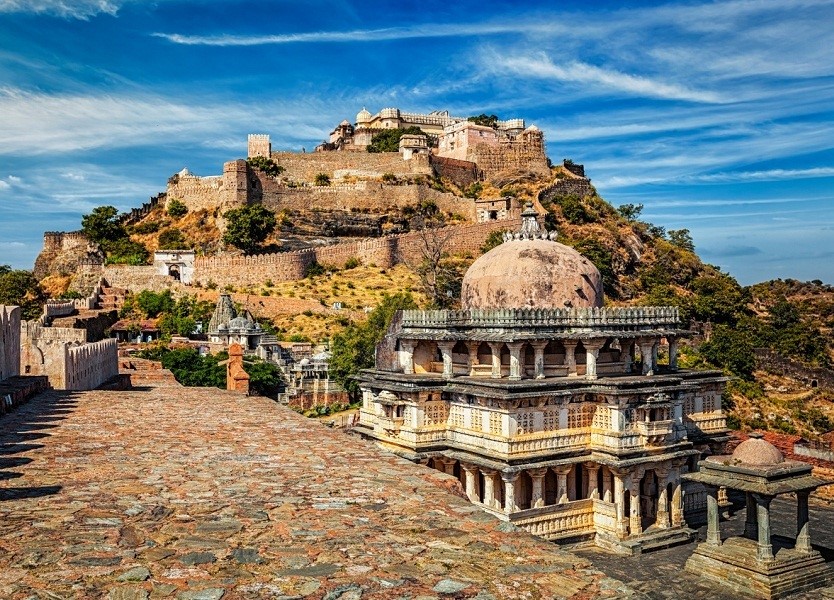
Seeing a confrontation as imminent now, Pratap determined to meet the imperialist challenge purposefully. In order to motivate his people faced with the onerous struggle, he foreswore all luxury and amorousness till Mewar had been redeemed.[20] He ordered lands in the plains to be laid waste,[21] leaving not one acre of crops or pasturage, to make it as inhospitable as possible for the Mughals if and when they came. It was to be stripped of all verdure to make food and fodder supply lines and means of communication for invading forces difficult and dependent on supplies from outside, which would make their foraging parties easy targets for the Mewaris. The interdict was strictly imposed and he personally ensured there was no violation of orders by severely punishing offenders to make an example of them.[22] The civilian population was compelled to retire eastwards to the hilly tracts around Kumbhalgarh and Kelwara. All important outposts and forts of Western Mewar were strengthened. A contingent of 300 horse was stationed at the entrance of Haldighati under cavalry leader, Joshi Puno, with the grant of village Dhol of Kumbhalgarh district.[23]
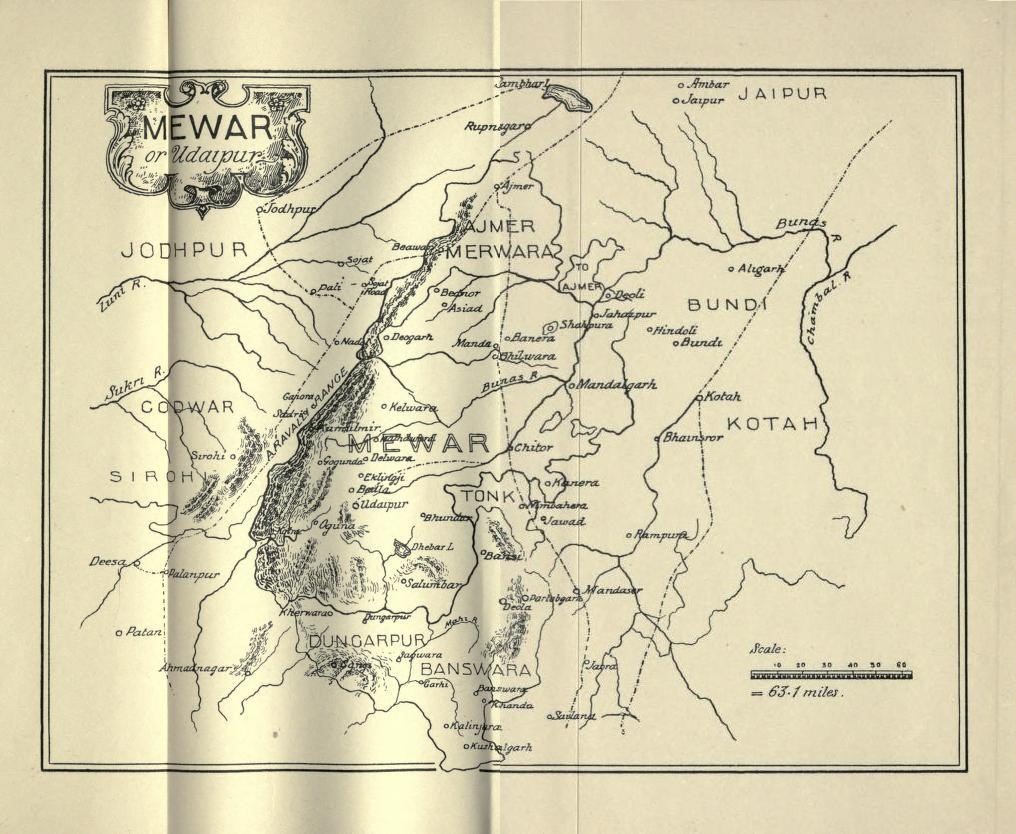
After the last Mughal embassy left Chittod in December 1573, Akbar was unable to immediately deliberate action against Mewar, as he had to divert his forces in quelling disturbances that had arisen in Kabul. Some Rajput states in the meanwhile ‘raised the standard of revolt’,[24] among them Rao Chandrasen of Jodhpur[25] along with his nephew[26], Rao Kalla, Rao Meghraj of Mahoba and Rao Surtan of Sirohi. It is amusing to note that Akbarnama refers to these struggles of some Rajputs and other kings to regain their territories and recover the right to determine their own affairs, as ‘revolt’, as though they were subjects of the Mughal Empire. He uses expressions like ‘overthrow the neck-stretching rebel’, ‘remedying the madness of the refractory’ to describe the aggression upon Chittod, whereas the Rana never submitted to Mughal authority.[27] The purpose of Akbar’s overtures towards the Rana was a fortiori to convince the Rajputs in his service that since Pratap had been unyielding, he was left with no other alternative but to wage a war unto the finish. Akbar knew in his heart of hearts every Rajput loved Mewar and the campaign of 1567-8 against Chittod had severely tarnished his reputation.
Cover Picture:
Outer peripheral wall of Kumbhalgarh Fort (Source: Wiki)
Read the next section of the series here.
[1] Nensi (Jyeshta Shudi 3, 1597)
[2] Muntakhab-ut-Tawarikh (Badayuni), Vol. II, pg. 228; ‘Vir Vinod’, Vol. II, pg. 146
[3] This can be seen from the emblem of Mewar state which depicts the Rana and a Bhil standing on either side of Eklingji, the ruling deity of Mewar.
[4] Akbarnama III (Pg. 51); Muntakhab-ut-Tawarikh II (Pg. 40); Tarikh-i-Akbari (Pg. 341)
[5] Though it appears much of it remained unrealised considering that 7 of the 24 districts were not even measured as late as the time when the Ain was written, indicating that Akbar never gained full control over these regions.
[6] Endowments to the Dargah of Ajmer were made out of the districts Badnor, Shahpura and Rayala under Mughal control. – ‘Mewar and the Mughal Emperors’, G. N. Sharma
[7] Ain-i-Akbari, Abu’l Fazl (pg. 273-4)
[8] Akbarnama III (Abu’l Fazl) (pgs. 43-44)
[9] “The empire of India was not worthwhile if it let two sovereign heads in India: Akbar, the Lord of the land, and Pratap, the Hindupat.” ~ R. S. Sharma
[10] The sulking Jagmal Singh had left Mewar immediately after his summary eviction from the throne and taken refuge with the Mughal governor in Ajmer. A claimant to Mewar’s throne was only too gladly accepted by the Mughals and at an opportune moment he presented himself before Akbar and entering his service was granted the jagir of Jahajpur. He was later appointed ruler of Sirohi in 1581, succeeding his father-in-law, Rao Mansingh. This brought him in conflict with Rao Mansingh’s nominee, Rao Surtan, which culminated in the Battle of Dattani (Mount Abu) in 1583, in which he died.
[11] Apparently, Akbar (like also his predecessor, Babur) felt the need to explain each one of his aggressions and/or acts of cruelty by some pretext unlike earlier Islamic rulers for whom Islam was good enough reason. What is notable was not whether the reason was acceptable or not, but the fact that it appeared necessary for protecting his reputation.
[12] Raja Narain Das of Idar was Pratap’s father-in-law and Rao Askaran of Dungarpur was a Sisodia kinsman of the Rana.
[13] Dungarpur eventually succumbed to Mughal power and in 1577, a daughter of Rao Askaran was married to Akbar.
[14] He was bound to pay his respects to the Rana as head of all Rajput clans, especially since he had recently ascended to the throne.
[15] Akbarnama, Vol. II (pg. 67)
[16] Contemporary chroniclers, Nur-ul-Haq (Zabdatu-Tawarikh), Rauza-ut-Tahirin (Tarikh-i-Badshahan-i-Temuri), Johannes De Laet (‘The Empire of the Great Mogul’, trnsl.), Khafi Khan and Ferishta venture no information on any such success in their accounts of the meeting.
[17] The Jahangirnama mentions Rana Amar Singh’s defeat in 1614 as the first ever submission by the Ranas of Mewar. Sir Thomas Roe in his memoirs, ‘Embassy of Sir Thomas Roe to the Court of the Great Mogul, 1615-1619’ (pgs. 496, 82, 90), echoes the same. Ralph Finch in his account, ‘Early travels in India, 1583-1619’ (pg. 170) is definite in his statement that the Ranas had never before bowed down their proud head. Iqbalnama-i-Jahangiri attests that Raja Man Singh had to return empty-handed.
[18] “मानसिंहेन तस्यासी द्वैयमनस्यं भुजे दिजों।”
[19] “जीमण पगा बिरस हुओ”
[20] “To commemorate the desolation of Chittor, Partáp interdicted to himself and his followers every article of luxury or pomp, until the insignia of her glory should be redeemed. The gold and silver vessels were laid aside for pateras of leaves, their beards were left untouched, and their beds were of straw; and to mark yet more distinctly their fallen state, the martial nakaras, which always sounded in the van of the battle or procession, were commanded to follow in the rear.” ~ Lt. Col. James Tod (The Annals and Antiquities of Rajasthan)
[21] Suryavansh (F. 19a); Vanshavali Ranajini (F. 68a)
[22] Tod (Annals of Rajasthan, pg. 82)
[23] Dhol grant – copper inscription (No. 214) Udaipur, dated 15th of Kartik Shuklpaksha, V.S. 1631 (October 29, 1574)
[24] Akbarnama III, pg. 81
[25] Rao Maldeo’s third son nominated his successor in preference to his sons Udai Singh and Ram Singh, in 1570, Chandrasen had defied Akbar in the Nagaur Durbar, leaving without the permission of the Emperor after disagreeing to his demands. Akbar fought Chandrasen in the Battle of Sojat (1574) with the help of Rajas from Bikaner and Amer, to support Udai Singh’s (Maldeo’s elder son’s) claim. In 1575, the powerful fort of Siwana which served as Chandrasen’s capital, was captured by the Mughals. Chandrasen was hunted relentlessly, until he finally retreated to Mewar.
[26] Son of his eldest brother, Ram Rai
[27] “He did not perceive the marvels of the Shahinshah’s fortune, and abandoned obedience and went astray.” (Akbarnama)
“..after the conquest of Chitor [Rānā Kikā] had founded a city of the name of Kokandā, consisting of mansions and gardens in the hilly country of Hindwarā, and was passing his time there in rebelliousness.” (Tabakat-i-Akbari)
First published June 27, 2018 at Jagrit Bharat.
